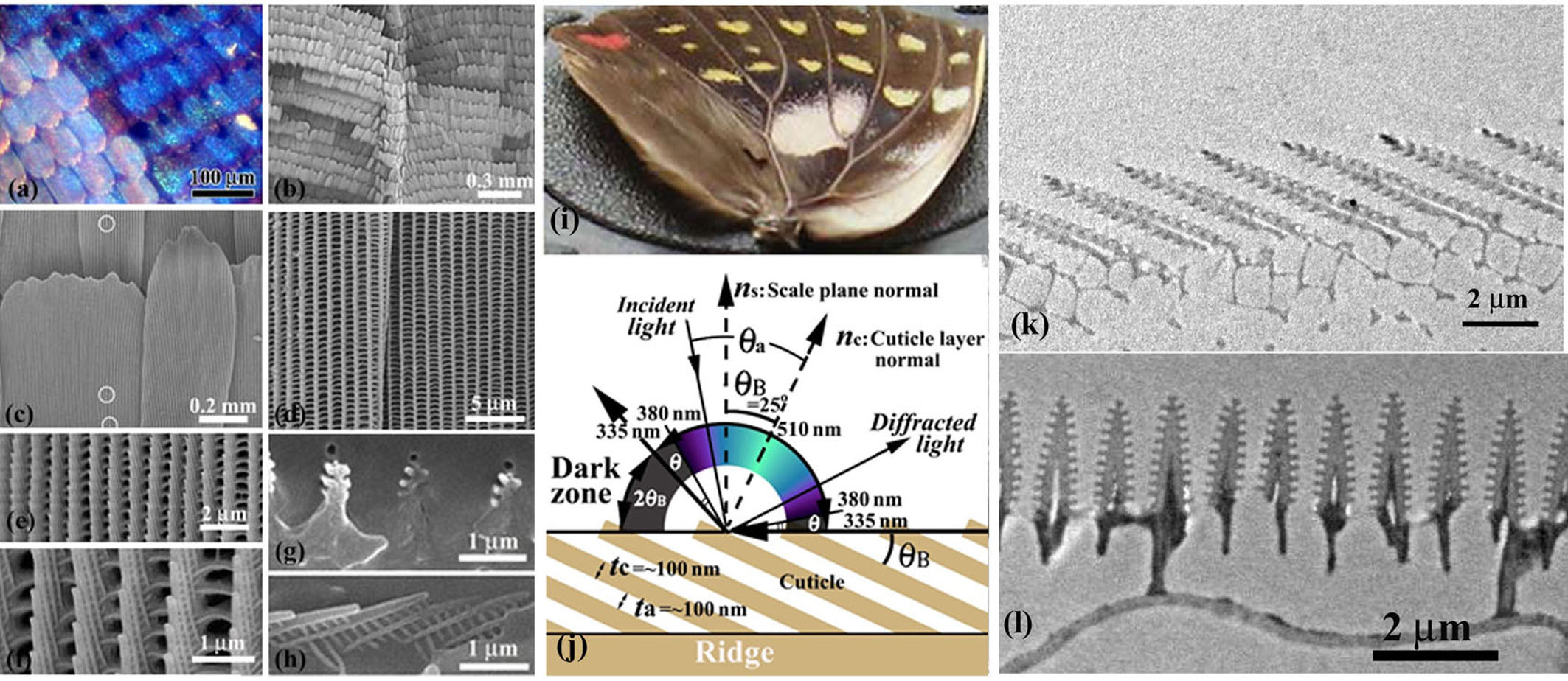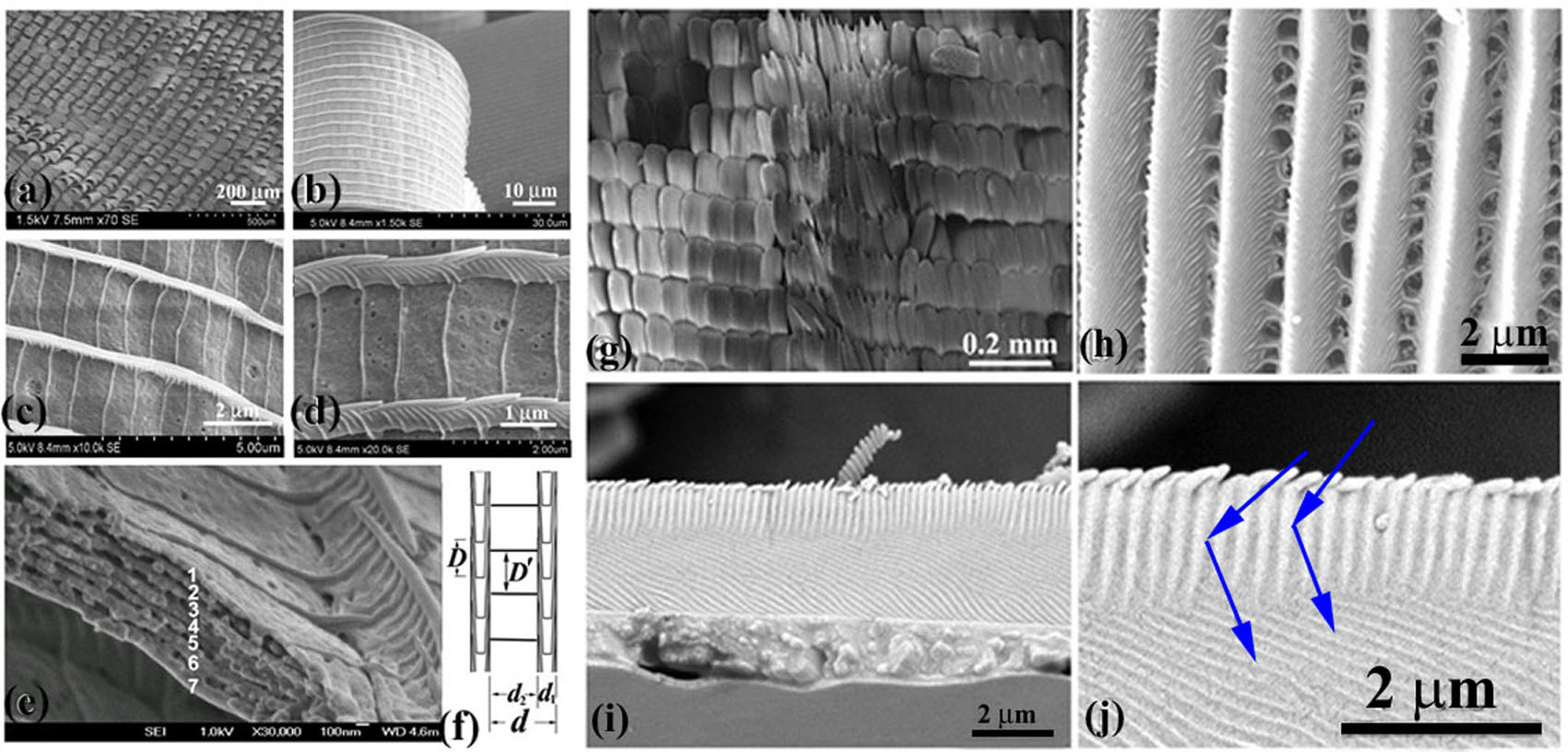IT-4-P-1456 Photonic Crystal Structure of Butterfly Wing Scales Exhibiting Selective Wavelength Iridescence
Characteristic patterns and the vivid coloration of the wing scales of butterflies have lately attracted considerable attention as natural photonic crystals. The coloration of butterflies that exhibit human visible iridescence from violet to green has been elucidated. A Sasakia charonda (S. charonda) or ‘great purple emperor’ butterfly (Fig. 1a) was sampled in a woodland in Japan, and an Euploea mulciber (E. mulciber) or 'striped blue crow’ butterfly (Fig. 1b) was reared from an egg at the Environmental Entomology Research and Development Center, Kasetsart University. SEM observations, with the aid of the optical reflectance measurement, revealed that highly tilted multilayers of cuticle on the ridges in their iridescent scales (Figs.1e-1h and Fig. 2a-h) cause a dark zone where no reflection occurs (Fig. 2i)1-3 and produce a limited-view, selective wavelength iridescence (ultraviolet (UV)~green) as a result of multiple interference between the cuticle-air layers (Fig. 2j).3,4 TEM observation of S. charonda’s iridescent scales, sectioned with an ultramicrotome confirmed these results (Fig.2j and 2k). The iridescence from Chrysozephyrus ataxus (C. ataxus) or Thermozephyrus ataxus butterflies (Fig. 1c), which were sampled in Japan, originates from multilayers in the groove plates between the ridges and ribs (Fig. 3a-3f).3,5 The interference takes place between the top and bottom surfaces of each layer and incoherently between different layers. Consequently, the male with the layers that are ~270 nm thick reflects light of UV~560 nm (green) and the female with the layers that are ~191 nm thick reflects light of UV~400 nm (violet). A Troides aeacus (T. aeacus) or ‘golden birdwing’ butterfly (Fig. 1d) also grew in Kasetsart University, The butterfly does not produce any iridescent sheen which Troides magellanus does.3,4 No iridescent sheen is ascribed to microrib layers, which are perpendicular to the scale plane (Fig. 3g-3j), so that they cannot reflect any backscattering. The structures of these butterflies would provide us helpful hints to manipulate light in photoelectric devices, such as blue or UV LEDs.
1J. Matějková-Plšková et al., J. Micros. 236, (2009) 88.
2J. Matějková-Plšková et al., Mater. Trans. 51, (2010) 202.
3F. Mika et al., Materials 5, (2012) 754.
4P. Dechkrong et al., J. Struct. Biol. 176, (2011) 75.
5J. Matějková-Plšková et al., Mater. Trans. 52, (2011) 297.
Present address of J. Matějková-Plšková: Sadovského 14, Brno 612 00, Czech Republic.
Presenting author acknowledges the support from MEYS CR (LO1212) together with EC (ALISI No. CZ.1.05/2.1.00/01.0017).


